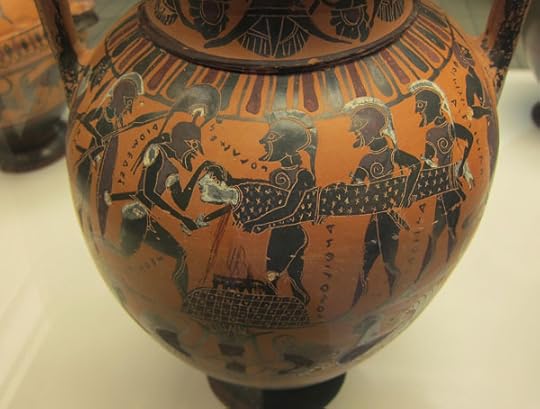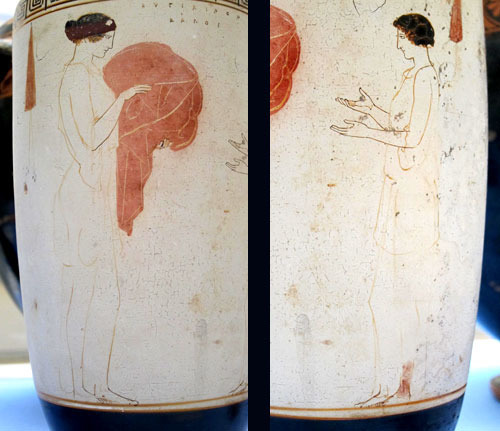Touching
We arrived in London on the evening of the 21st. The next day we spent getting our bearings, since we're staying in a part of the city that is new to us. We took a bus to Hyde Park and went for a long walk (more pictures later), and then had dinner at a Turkish restaurant with my dear blogging friend Jean of Tasting Rhubarb.
The next day J. went to the Portrait Gallery and I went to the British Museum. The Great Court has been built since our last visit; It's quite impressive and the light in it is very beautiful. I was on a specific mission to study the Greek vases, so I walked quickly past the Rosetta Stone (now under glass), the Egyptian antiquities and the Assyrian galleries, and went straight to the Greek rooms.
The vases are so fantastic. This one shows the sacrifice of Polyxena, Cassandra's sister, after the fall of Troy.
I'm crazy about white-ground lekythoi, especially those of the so-called "Achilles Painter." This is a very famous one. Just look at the confidence of his lines, all drawn with a small brush!
But this is what really gets me about the British Museum. Here is a beautiful helmet (you can see some of the Elgin marbles reflected to the left,) but beside it was an unassuming calcite jar with some markings scratched into the surface. When I read the descriptive tag, this is what it said:
This jar is inscribed "Xerxes, Great King of Persia," in Old Persian, Elamite, Babylonian, and Egyptian scripts. Xerxes, who ruled Persia from 485-465 BC, invaded Greece in 480 BC. He was defeated at the Battle of Salamis in 479 BC. One of his generals was Artemisia of Caria. The jar appears to have been a present from Xerxes to Artemisia, and passed through the Carian royal line. It was eventually deposited in the Mausoleum at Halicarnassus, the tomb of Mausolus and his sister (died around 350-351 BC). The vessel is a remarkable record of political and cultural contact between the Persian and Greek worlds.
I stared at it for a long time. This jar in front of me had actually belonged to Xerxes, who may have held it in his own hands before giving it to his general, around the time of the Persian Wars. That just blows my mind.







